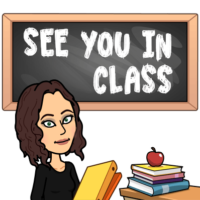
There are no experts in 2020. Not one of us has a silver bullet to reopening schools in the midst of a global pandemic. Beware of anyone who claims to have “the answer” for all. Each community, each educational organization, has differing needs. As you begin to discuss reopening plans, be sure to involve teachers, parents, students, and the community in the conversations. And remember that we are all on a learning journey in this new context. Even more important, each model need not look the same. I am no expert, I offer merely considerations.
Lead with a Spirit of Inquiry
As your community begins to discuss the most appropriate reopening options for your context, it is vital to be curious. Ask questions or stakeholders, predict obstacles and seek to understand the needs of all stakeholders. I created the following questions and a sample elementary hybrid schedule to prompt discussions that meet the needs of our region. I encourage you to use these resources to spark discussions to meet your personalized needs.
Questions to Consider
How might we ensure social distancing and consider logistics (staffing, busing, cleaning)?
What must we do to build the capacity of our staff to implement this new way of designing learning experiences?
How might we guarantee that teachers have protected prep/planning time to effectively meet the needs of their students in this new model?
What infrastructure/technology do we need to implement this model?
How might we meet the needs of all students – 100% distance, special needs, internet connectivity challenges, special populations, etc.?
What are our plans for meeting the social emotional needs of our staff, students, and families?
Tips for an Effective Hybrid Model
- Blend synchronous and asynchronous into a fluid model with many connections between the two. Design a learning experience, synchronous and asynchronous must complement each other, not stand alone.
- Synchronous – give full attention to the students in front of you, whether physically or virtually. Smaller groups are more effective and allow you to go deeper into content than a large group where your attention is divided.
- Asynchronous – it is possible to maintain relationship building activities in an asynchronous format. This may include pre-recorded videos of the teacher, collaborative asynchronous discussion platforms (flipgrid, LMS discussion boards, collaborative files, etc.).
Sample Elementary Hybrid Schedule

